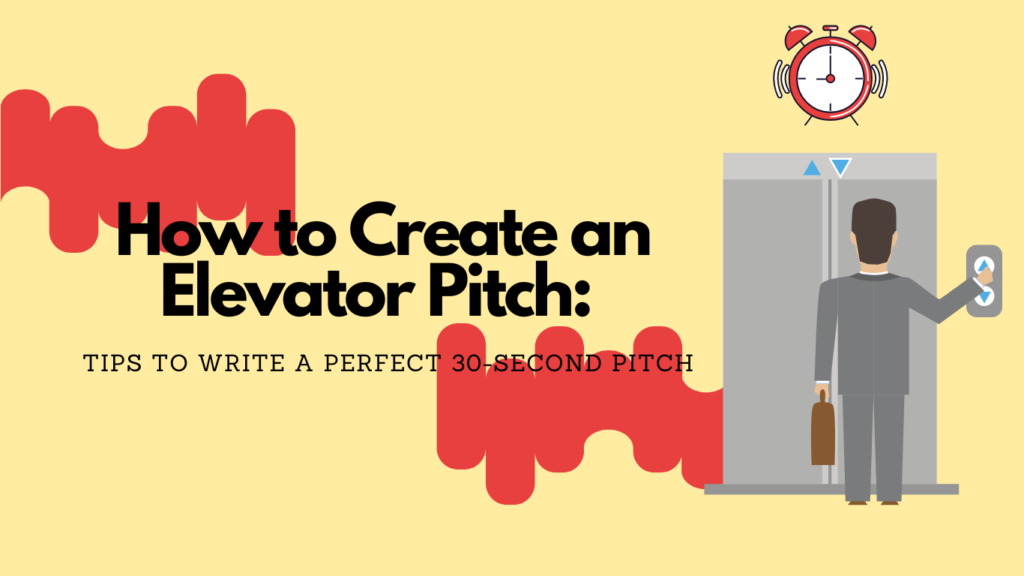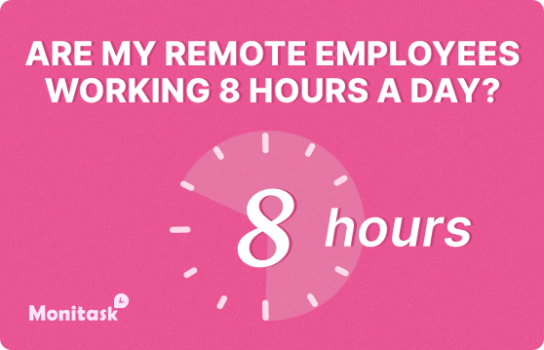How to Create an Elevator Pitch: Tips to Write a Perfect 30-Second Pitch

Have you ever stopped to think how long an elevator ride takes? No? Well, fun fact! A typical elevator ride might take anything from 10 to 90 seconds, depending on your location. For example, if you are in New York, elevator rides are a bit longer, peculiar eh? But, what does this have to do with elevator pitches, anyway?
You see, an elevator pitch is very similar to an elevator ride. You have a set amount of time, usually around 30 seconds, to deliver your message and make an impact. So, if you’re thinking about how to write the perfect elevator pitch, think about it like you would an elevator ride. In this blog post, we are telling you everything about writing and giving the perfect elevator pitch.
Stay tuned!

The origins of elevator pitches have many stories and theories. One story suggests that elevator pitches were first by Philip Crosby, author of “The Art of Getting Your Own Sweet Way” (1972) and “Quality Is Still Free” (1996) suggested individuals should have a pre-prepared speech for elevator rides in order to sell their ideas.
Crosby believed that if you couldn’t explain what you did and why it was important, in the time it takes to ride an elevator, then you didn’t really understand it yourself
Another commonly-known origin story is that of Ilene Rosenzweig and Michael Caruso, two former journalists working at Vanity Fair. According to Rosenzweig, Caruso was constantly trying to convey his ideas to the Chief Editor at the time, but since she lacked time, he wasn’t able to pin her down for longer than 1 minute.
Therefore, Caruso started to join her during short free periods of time she had, such as on an elevator ride. Thus, the concept of an elevator pitch was created! Yet, those little speeches were not known as “elevator pitches” and this term wasn’t coined until the late 1980s or early 1990s. To date, it is unclear who first used the term elevator pitch.
What is an Elevator Pitch?
An elevator pitch, also known as a 30-second pitch, is a short, persuasive speech that you can use to introduce yourself and your business. It should be clear, concise, and most importantly, engaging. In just 30 seconds, you need to be able to explain what your business does, who you are, and why someone should care.
If you can do all that successfully, you’re on your way to impressing potential investors or clients!

The term elevator pitch comes from the idea that you should be able to explain your proposal in the time span of an elevator ride, around 30 seconds
Some people argue that elevator pitches are outdated because they are too short to be effective. However, in today’s fast-paced world, elevator pitches can be a helpful way to quickly get your point across. They can also be a useful tool for networking and building relationships with potential customers or investors.
Wondering how to write an elevator pitch? Keep reading for elevator pitch examples and tips on how to craft the perfect elevator speech!
Why Everyone Needs A Good 30-Seconds Elevator Pitch
Elevator pitches are not just for entrepreneurs or salespeople. In today’s competitive job market, elevator pitches can also be a useful tool for job seekers or employees who want to promote themselves for a better job position.
A good elevator pitch can help you stand out from the crowd and make a lasting impression on potential employers
An elevator pitch can:
- Help you clarify your thoughts and ideas: If you can’t explain your business or job in a short elevator ride, then you probably don’t understand it well enough. Elevator pitches push you to really think about what you do and why it matters.
- Build up your confidence: Elevator speeches are a great way to build confidence and practice your public speaking skills.
- Makes a lasting impression: In today’s competitive job market, it is important to stand out from the crowd. A well-crafted elevator pitch can help you make a lasting impression on potential employers or networking contacts.
Now that we’ve gone over some of elevator pitches 101, let’s move on to tips for writing the perfect elevator speech!

How to Create an Elevator Pitch: Tips to Write a Perfect 30-Second Pitch
An elevator pitch is a powerful tool that can help you make a lasting impression and win over potential customers or investors. Here are some tips for writing a great elevator pitch:
First Impressions Do Matter
An elevator pitch doesn’t start at your “Hello, my name is…” They actually start with your non-verbal cues. According to Dr. Albert Mehrabian’s 7%-38%-55% Rule, only 7 percent of what you say is what you say, while 38 percent is how you sound and 55 percent is how you look.
So, 93% of what someone thinks about you has nothing to do with what you really say!

Therefore, that first hand shake, the eye contact is very much important even before starting to speak!
Get more out of your business
Get the best employee engagement content every week via mailing list
Start with a Strong Hook
Since you only have a few seconds to make a good impression, you need to make sure you start strong!
Your elevator pitch should start with a powerful hook that grabs the other person’s attention and makes them want to keep listening. Try to avoid starting with general statements or platitudes like “I’m the best candidate for the job.” Instead, focus on something specific and interesting about yourself or your business.
Some examples of strong hooks include:
- Asking a question
- Making a bold statement
- Sharing an interesting statistic
- Telling a personal story
Please, Don’t Forget to Introduce Yourself
Imagine you are pitching your business and your target person has to ask you who you are? A bit embarrassing, eh?
It’s important to remember to introduce yourself when giving your elevator pitch. Whether you’re at a networking event or just riding up the elevator with someone, starting your pitch with a simple introduction can make a world of difference.

When you introduce yourself, the other person will be more likely to pay attention and be interested in what you have to say. They may even remember your name and be more likely to follow up with you later.
Keep It Simple and Concise
Don’t try to cram too much information into your elevator pitch. The goal is to pique the other person’s interest and get them to want to learn more, not give them a complete overview of everything you do.
An elevator pitch should be short, sweet, and to the point. Remember, you only have 30 seconds!
When crafting your elevator pitch, remember to focus on the basics: who you are, what you do, and what makes you different. Keep it short and to the point, and make sure that you can explain your business in a clear and understandable way. If you can nail down a catchy slogan or tagline, that can be helpful as well!
Tailor Your Audience
If you think you can make the same elevator pitch to anyone, think twice! That would be a waste of your time and theirs! In fact, the Harvard Business Review insists that “The Best Presentations Are Tailored to the Audience”
Elevator pitch should be tailored to your audience. That means you need to know who you’re talking to and what they’re interested in
Your elevator pitch should be tailored to your audience and explain what you can do for them. For example:
- If you’re pitching to a potential employer, your elevator pitch might focus on your skills and experience.
- If you’re pitching to a potential investor, your elevator pitch might focus on your business model and how it will make money.

Define the Problem and the Solution to that problem
In business, it’s essential to be able to clearly define the problem that you’re trying to solve, therefore your elevator pitch should focus on the problem that your business or product solves.
For example, if you’re pitching a new app, you might say something like “Our app helps busy people make better use of their time by providing a simple way to manage their tasks.”
If you can identify the problem that your audience is facing and present a solution, you’ll be well on your way to writing a successful elevator pitch!
Credibility Statement
Credibility is important when making any kind of pitch, and elevator pitches are no exception. A credibility statement is a brief explanation of why you’re qualified to solve the problem you’ve identified.
By including a credibility statement, you’ll be able to build trust and credibility with your audience.
For example, if you’re pitching a new app, you might say something like “Our team has over ten years of experience in app development.”
Include a Financial Summary
If you’re pitching a business idea, make sure to include a financial summary. This will give your audience an idea of how much money you expect to make and how quickly you expect to see results.
For example, you might say something like “Our app has the potential to generate $100,000 in revenue X months.” This will show your audience that you’ve thought about the financials and that you’re serious about making money.
If you’re including numbers in your elevator pitch, make sure they are relevant and interesting!
End with a Call to Action
Your elevator pitch should always end with a call to action, or an invitation for your audience to learn more, such as asking for an interview or offering to send more information. This is your chance to make a connection and move the relationship forward. If you don’t take advantage of it, you may never hear from the other person again.
Here are some examples of calls to action you can use:
- “I’d love to meet with you for coffee so we can chat further.”
- “Would you like me to send you my portfolio?”
- “Can I add you to my mailing list so you can stay up-to-date on my latest offerings?”
- “I’ll be in town next week, can we schedule a time to meet?”
Don’t Be Afraid to Practice
Practice makes perfect! Rehearsing your elevator pitch will help you to feel more confident when it comes time to deliver it. It will also help you to identify any areas that need improvement.
Try recording yourself on video or audio so you can hear how you sound. Or, practice in front of a friend or family member and ask for feedback. The more you elevator pitch, the easier it will be to deliver it with confidence!
An elevator conversation is a casual chat you might have with someone else in the elevator, while an elevator pitch is a formal presentation. So don’t be afraid to practice your elevator pitch until it feels natural!
Here’s a quick elevator pitch template you can use:
[Hook] + [Problem you solve] + [How you solve it/What you do] + [Credibility statement] + [The offer/call to action].
For example:
“Are you tired of feeling overwhelmed by your never-ending to-do list? I help busy women learn to prioritize their time and focus on what’s truly important so they can get more done in less time.
As a certified productivity coach, I’ve helped hundreds of women streamline their schedules and achieve their goals. Would you like me to send you my free guide on how to get started?”
Takeaway
An elevator pitch is a short, easy way to introduce your company to people you meet. It’s like a business card in terms of how fast and simple it is to use. You want to be able to deliver it in under a minute, so practice saying it out loud until you can do so easily!
Make sure to include these key elements when writing your elevator pitch:
- A hook
- A focus on the problem you solve
- An explanation of how you solve it
- A credibility statement
- A financial summary (if applicable)
- A call to action
And don’t forget to practice! The elevator pitch is a great way to get your foot in the door, but it’s not the only tool you need in your networking arsenal. For more information on how to market yourself and your business, check out our other blog posts!
Happy pitching!
-The Monitask Team


